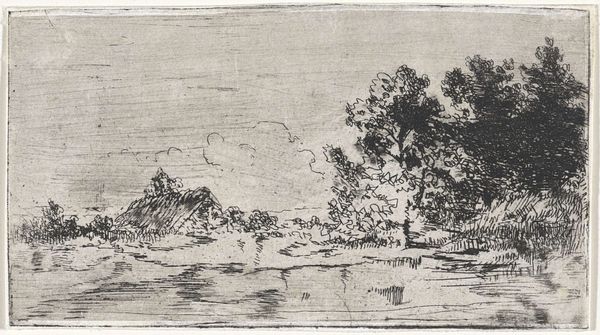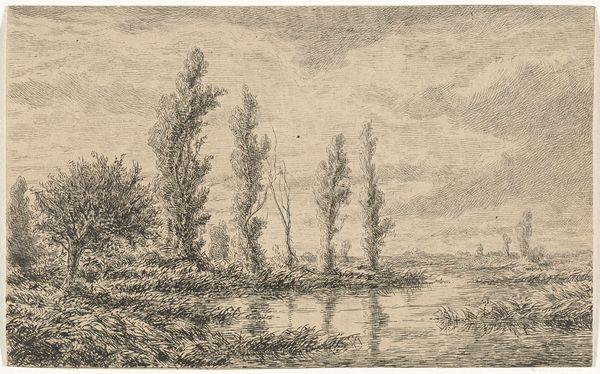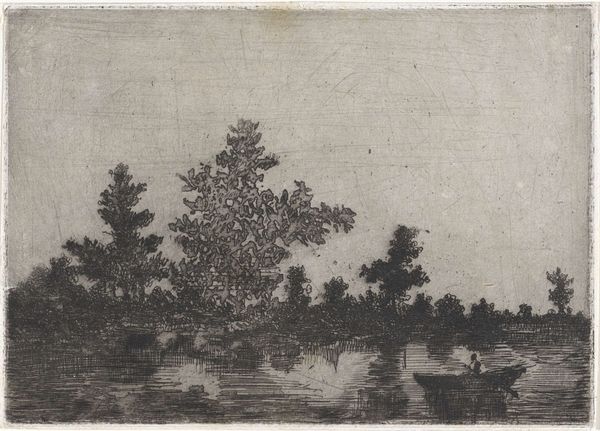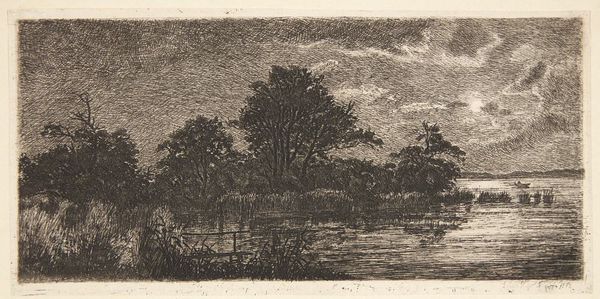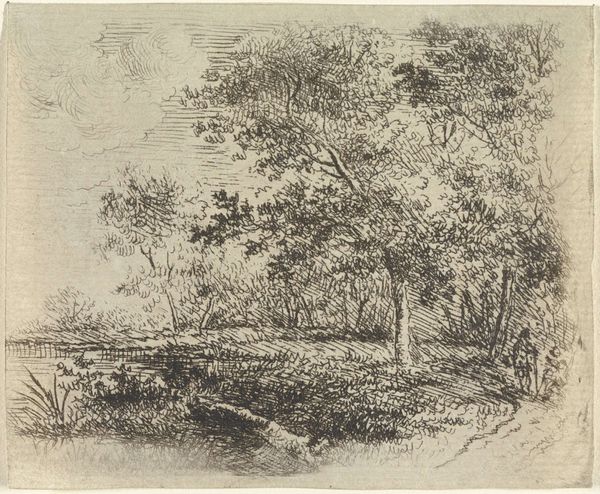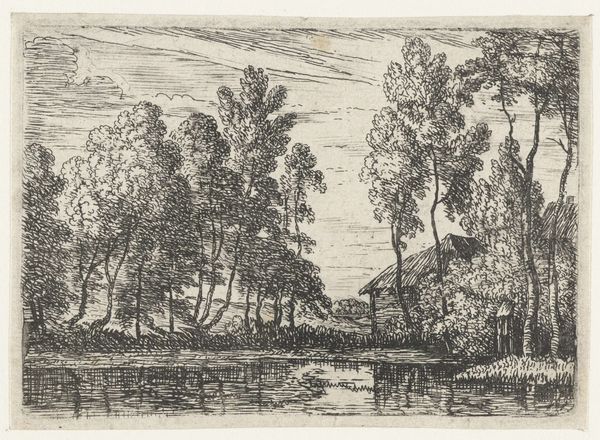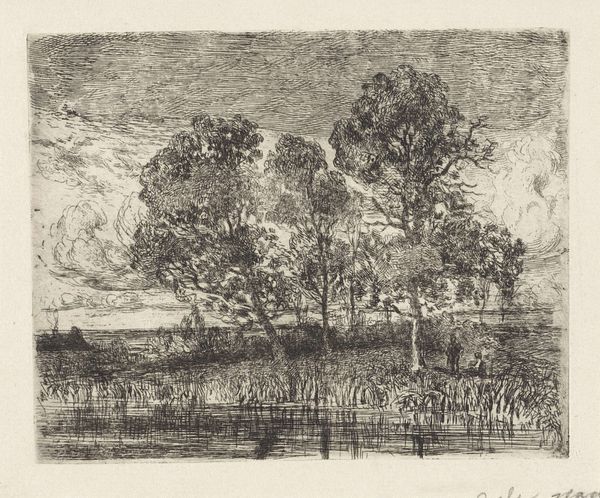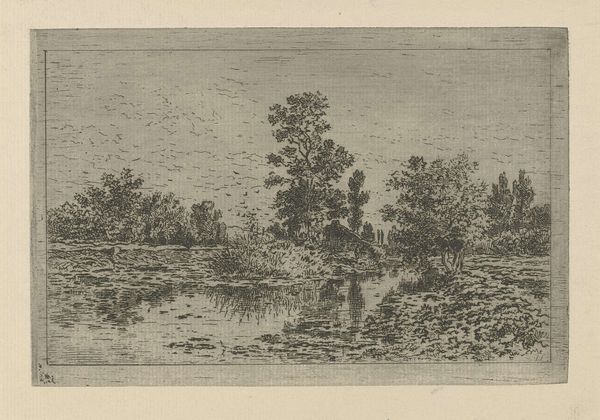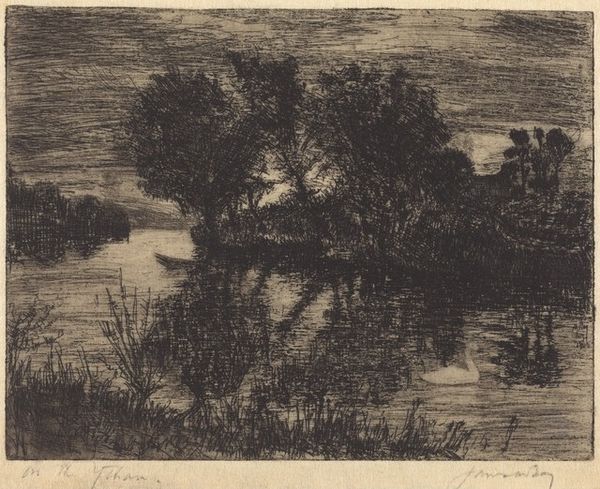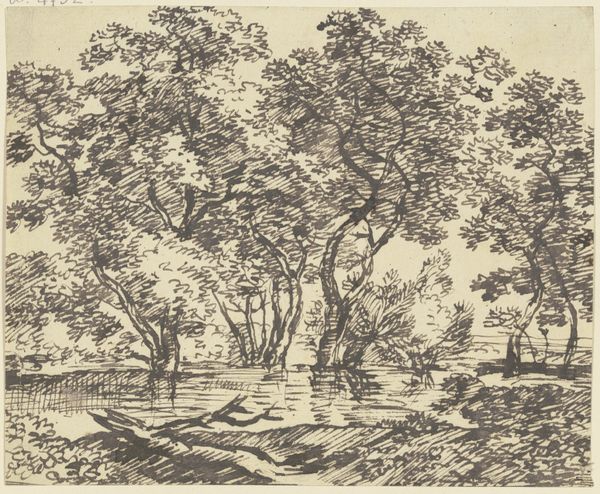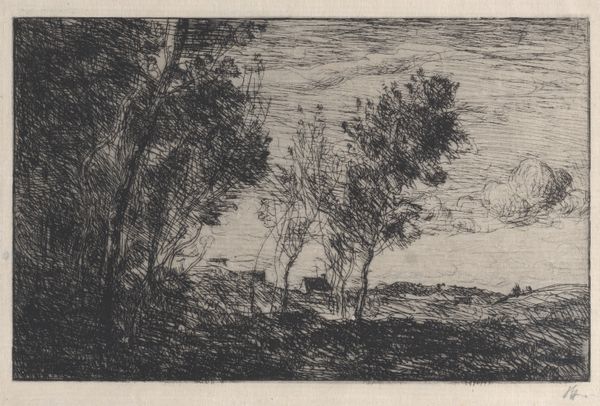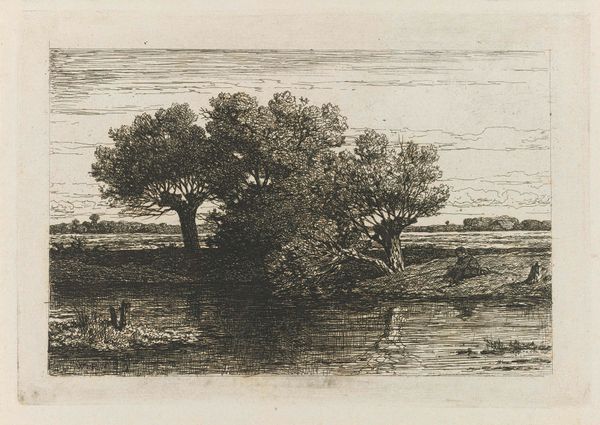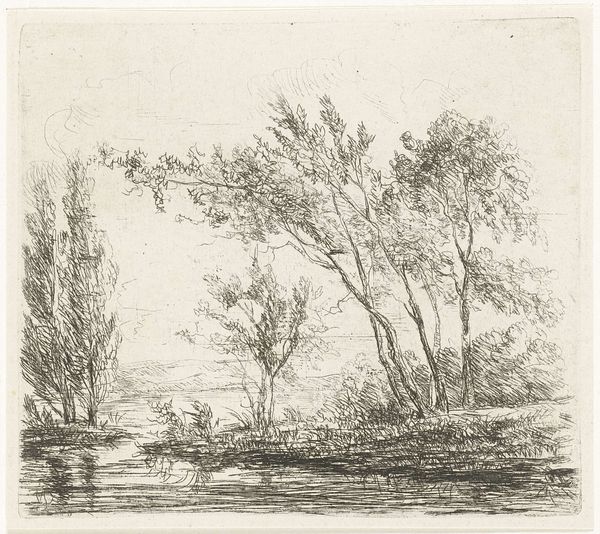
drawing, print, etching, paper
#
drawing
# print
#
impressionism
#
etching
#
pencil sketch
#
landscape
#
etching
#
paper
Dimensions: 154 × 188 mm (image); 161 × 200 mm (sheet)
Copyright: Public Domain
Charles François Daubigny made this etching, Clump of Alder Trees, in nineteenth-century France. The work depicts a scene of nature, seemingly untouched by industrialization, in a way that embodies the Barbizon school's rejection of academic convention. Notice how the image creates meaning through visual codes, cultural references, and historical associations. During the mid-1800s, France was undergoing rapid industrialization, which caused many artists to seek refuge in nature, a theme that grew in popularity in French art at the time. As urbanization increased, there was a growing nostalgia for rural life and the simplicity of nature. What could this tell us about the social structures of the time? Is the artwork commenting on it in any way? To understand this piece better, art historians like myself might consider the relevance of these changes through the study of relevant literature and art criticism of the time, as well as the artist's biography. Art is contingent on social and institutional context, which means that our interpretation of it is affected by these contexts as well.
Comments
No comments
Be the first to comment and join the conversation on the ultimate creative platform.
